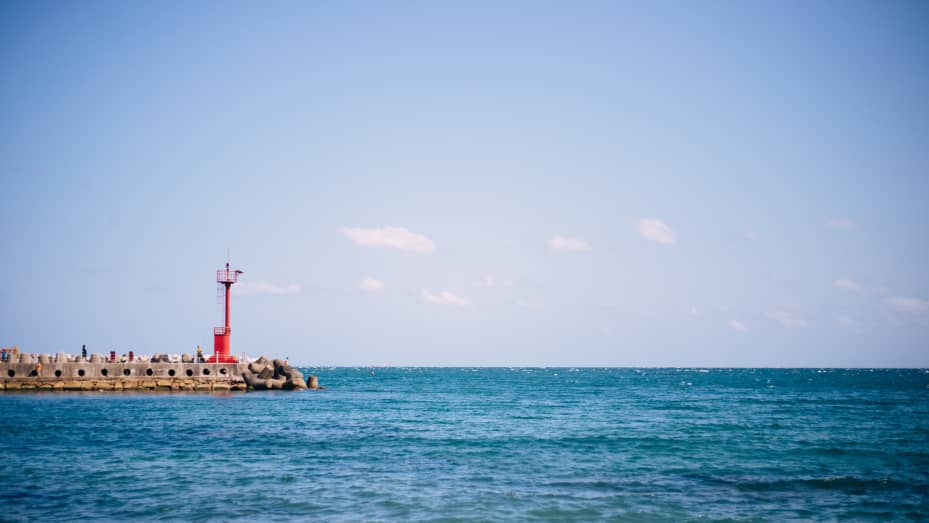
CNBC가 전한 소식이다.
울산 앞바다에 대규모 부유식 해상풍력발전단지를 개발하기 위한 합작법인 ‘문무바람’이 공식 설립되었다.
한국 업체 코엔스와 스웨덴 회사 헥시콘의 합작회사인 코엔스헥시콘이 문무바람의 지분 20%를 보유하고, 쉘이 나머지 지분 80%를 갖게 된다.
앞서 이번 주 초 쉘 측은 “해당 프로젝트가 타당성 평가 단계에 있다”고 밝혔다. 투자가 확정될 경우 1.4기가와트급 발전 단지가 울산에서 65~80km 떨어진 곳에 건설될 예정이다.
단계적으로 개발될 해당 시설의 수심은 120~160M 범위이며, 연간 4.65테라 와트시 규모의 에너지를 생산해 100만 가구에 전력을 공급할 것이라고 CNBC는 전했다.
쉘의 해상 풍력 아시아 총괄 책임자인 조 나이(Joe Nai)는 수요일 “쉘은 해상 풍력 에너지를 한국은 물론 전 세계적으로 제로 에너지를 달성할 핵심 부분으로 보고있다”고 밝혔다.
문무바람의 설립은 한국이 2050년까지 탄소 중립을 목표로 함에 따라 이루어졌다. 한국은 재생 에너지 점유율을 2017년 7.6%에서 2030년 20% 도달과 해상 풍력 발전 용량을 12기가와트로 하는 것을 함께 목표로 두었다.
A joint venture centered around the development of a massive floating offshore wind farm in waters off South Korea has been formally established.
Oil and gas major Shell has an 80% stake in the JV, which is called MunmuBaram, with the remaining 20% held by CoensHexicon. The latter is itself a joint venture between South Korea-headquartered COENS and Swedish firm Hexicon.
In a statement earlier this week Shell said the project was in what it described as “a feasibility assessment stage.” If built, the 1.4 gigawatt wind farm would be situated between 65 and 80 kilometers off Ulsan, a coastal city and industrial hub in the south east of the country.
Water depths for the proposed facility, which would be developed in phases, range between 120 and 160 meters. It would be expected to produce as much as 4.65 terawatt hours of energy annually, powering over 1 million households.
“Shell views offshore wind energy as a key part of a net-zero energy system, both in South Korea and globally,” Joe Nai, Shell’s general manager of offshore wind Asia, said Wednesday.
The formal establishment of the MunmuBaram venture comes as authorities in South Korea target carbon neutrality by the year 2050. The country wants renewable energy’s share in power generation to hit 20% in 2030, up from 7.6% in 2017, and aims to develop 12 gigawatts of offshore wind capacity by 2030.
While Shell is working on renewable energy projects and says it wants to become a net-zero emissions energy firm by 2050, it remains a significant producer of fossil fuels. In February, the business confirmed its total oil production had peaked in 2019 and said it expected its total carbon emissions to have peaked in 2018, at 1.7 gigatonnes per year.



![[e면엔] 끊임없는 실험과 발명이 아마존을 이끈다](https://mobiinsidecontent.s3.ap-northeast-2.amazonaws.com/kr/wp-content/uploads/2022/04/18134319/%EA%B9%80%EC%97%B0%EC%A7%801-218x150.jpg)
![[IT트렌드 속성 가이드북] 첨단 테크놀로지보다 더 중요한 것?](https://mobiinsidecontent.s3.ap-northeast-2.amazonaws.com/kr/wp-content/uploads/2022/03/25160353/GettyImages-1349094328-218x150.jpg)
![[800인의 대표 이야기] 1등 에너지 플랫폼 스파크플러스 입주사 엔라이튼은 왜 사명을 바꿨을까](https://mobiinsidecontent.s3.ap-northeast-2.amazonaws.com/kr/wp-content/uploads/2022/03/22114334/%EC%8A%A4%ED%94%8CX%EC%97%94%EB%9D%BC%EC%9D%B4%ED%8A%BC1-218x150.png)